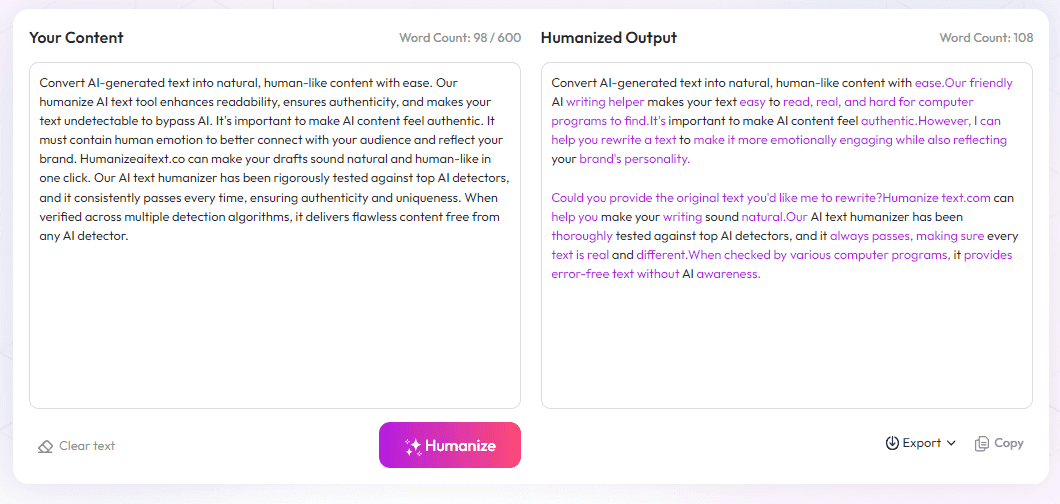Table of Contents
Building a strong online presence means sharing the right content that shows what you're good at. Many people struggle with figuring out the main topics they should focus on to become authorities in their niche. If you're feeling lost about where to start or how to organize your content, don't worry—there's a simple way to get it all in order.
Keep reading, and you'll learn how to define your key content areas, create focused pages for each, and link everything in a way that builds your reputation over time. Plus, you'll discover tips on keeping your content relevant and checking its progress as you go.
Key Takeaways
Key Takeaways
- Focus on 3-5 main content themes called pillars that show what you are best at and what your audience cares about.
- Create a detailed main page for each pillar that serves as a central hub, linking to smaller related pages to cover topics thoroughly.
- Build content clusters around each pillar by making related articles that answer specific questions, boosting your site’s depth and relevance.
- Link your pages wisely using clear keywords to help Google understand your site structure and strengthen your authority.
- Prioritize high-quality, useful content that answers questions well, updating it regularly to stay current and trustworthy.
- Track how your content is performing using tools, and keep refining your pages to improve rankings and maintain your niche authority.

Define Your Authority Building Content Pillars
The first step in creating a strong content strategy is identifying your core themes, known as authority building content pillars. These pillars act as the foundation around which all your content revolves. Think of them as the main rooms in your house, each dedicated to a specific topic that aligns with your expertise and audience interests.
To start, choose broad topics that you are both knowledgeable about and that resonate with your target audience. For example, if you run a health-oriented website, your pillars might be nutrition, mental health, and fitness. Make sure these pillars are specific enough to avoid overlapping but broad enough to generate multiple subtopics. Defining clear pillars helps Google understand what your site is about and positions you as a trusted authority in those areas.
Deeply exploring each pillar is crucial. For instance, if a pillar is "content marketing," your subtopics could include SEO writing, social media strategies, and email campaigns. This depth signals to search engines that your site covers a topic comprehensively, increasing the chances of being featured in snippets and ranking highly.
In fact, comprehensive pillar pages that cover broad topics tend to perform better in search results. They’re more likely to answer multiple related questions in one place, making it easier for Google to select your content for featured snippets. As you build out your pillars, consider incorporating structured data and headers to help search engines easily parse your content.
Choose 3-5 Clear and Focused Pillars
Once you understand the importance of pillar content, the next move is selecting a handful—usually three to five—that best represent your business or niche. Having too many pillars can dilute your focus, making it harder to rank well for each. Conversely, too few might limit your scope and opportunities for ranking.
Pick pillars that are aligned with your expertise and audience needs. For example, a financial advisor might focus on retirement planning, investment strategies, and tax optimization. These specific areas allow you to develop in-depth content, strengthening your topical authority.
Each pillar should be distinct enough to cover separate aspects of your overall theme. This clarity helps Google understand your site’s structure and improves your chances of ranking in featured snippets for diverse queries. Remember, the goal is to be seen as the go-to resource for those key topics.
By narrowing your focus, you can craft targeted content that hits the most common questions users ask. This targeted approach effectively increases your chances of appearing in the coveted "position 0" snippets, capturing quick answers in search results. And with over 70% of all search traffic coming from long-tail keywords, focusing on niche pillars helps you optimize for specific, high-converting terms.
Develop a Main Page or Hub for Each Pillar
For each pillar you choose, creating a dedicated main page is a smart move. This page acts as a hub—an authoritative resource that provides a broad overview of the topic. It's like the index at the back of a book, guiding visitors to relevant subtopics and related content.
This hub should include a comprehensive introduction to the pillar, outlining what visitors can expect to find under that theme. Use clear headers and structured data to help search engines understand the context and hierarchy. Linking to detailed subpages within this hub creates a solid internal link structure, which boosts SEO and enhances user navigation.
For example, if your pillar is "digital marketing," your main page might cover broad concepts and link to specific topics such as content creation, PPC advertising, and analytics. These subpages become content clusters—smaller, focused pages that support the main pillar. This setup not only improves user experience but also signals to Google that your site covers the topic extensively, boosting your chances of ranking in snippets.
Remember, the main hub should be detailed enough to satisfy search intent but concise enough to keep visitors engaged. Including a FAQ section with common questions can increase your chances of capturing featured snippets, especially if you format it with clear headers and bullet points.
Create Content Clusters Around Each Pillar
Once your pillar pages and hubs are in place, building content clusters is the next step. Content clusters are groups of related articles or pages that delve into specific subtopics or questions related to your main pillar. Think of them as the rooms branching off your house—each dedicated to a particular aspect of your core theme.
Creating clusters increases the depth and breadth of your coverage. For instance, under the "content marketing" pillar, your cluster pieces might include "How to Write SEO-Friendly Blog Posts," "The Best Social Media Tools in 2025," and "Email Campaign Tips for Beginners." These articles link back to your main pillar page, reinforcing topical relevance.
This interconnected structure is favored by Google because it demonstrates authority and thorough knowledge of a subject. It also improves site navigation, encouraging visitors to spend more time exploring your content. Strategically, you'll want to answer common questions within these articles in a straightforward manner, increasing your chances of winning featured snippets.
Optimizing each cluster for long-tail keywords—questions and specific terms—helps you capture niche queries that drive quality traffic. Remember, 70% of search traffic comes from long-tail keywords, so tailoring content around these specific terms can significantly boost your visibility.
Link Content Strategically to Build Authority
The backbone of establishing authority is how you link your content. Internal linking is key, connecting your pillar pages, hubs, and clusters. These links tell Google how your content is related and help distribute ranking power across your site.
For example, within an article about "email marketing best practices," you can link back to your main "digital marketing" pillar page or related cluster articles. This not only guides users to more relevant content but also signals content importance to search engines.
Be intentional with your links—use descriptive anchor text that clearly indicates what the linked page covers. Instead of generic phrases like "click here," use keywords such as "advanced SEO techniques" or "social media advertising tips." This practice strengthens your topical relevance and boosts your chances of appearing in featured snippets.
Moreover, external backlinks from reputable sites greatly amplify your authority. Focus on building relationships with industry partners, guest posting, and creating shareable content that naturally attracts backlinks. Websites with more backlinks tend to rank higher in Google’s top results, and they’re more likely to be featured in snippets.
In the end, strategic linking—both internally and externally—is vital for building authority and increasing your chances of being featured prominently in search results. It’s about creating a web of relevant, high-quality content that both users and search engines trust.

Focus on Content Quality and Relevance
Creating high-quality content that truly helps your readers is key to building authority.
Make sure every piece of content you produce is well-researched, accurate, and provides clear value.
Avoid keyword stuffing or filler, and instead aim for thorough, detailed answers that address your audience’s questions.
Use a conversational tone—think of explaining complex ideas as if you're chatting with a friend.
Update your content regularly to keep it current, especially as new tools, trends, or data emerge.
Don’t shy away from including examples, case studies, or actionable tips that your audience can use right away.
Remember, Google rewards content that satisfies user intent and keeps visitors engaged longer.
Monitor Performance and Update Content Regularly
Keeping an eye on how your content performs is a smart habit.
Use tools like Google Analytics or Search Console to track page views, engagement, and keyword rankings.
Look for evergreen content that continues to bring traffic over time and plan updates accordingly.
Refresh outdated statistics, add new insights, or expand sections that need more detail.
Analyze which pages are bringing in the most backlinks and optimize them further.
By continuously refining your content, you improve your chances of ranking higher and maintaining authority in your niche.
FAQs
Content pillars are main topics that define your expertise. They help organize your content, attract your target audience, and establish authority in your niche, making your strategy more focused and effective.
Select pillars that align with your expertise and audience interests. Focus on topics where you can provide value consistently and that support your overall business goals.
A main hub serves as the central place for all content related to a pillar. It improves navigation, reinforces your expertise, and helps search engines associate your content with specific topics.
Develop related articles or content pieces that link back to your main pillar page. This structure enhances authority and improves SEO by demonstrating topic relevance across your site.



